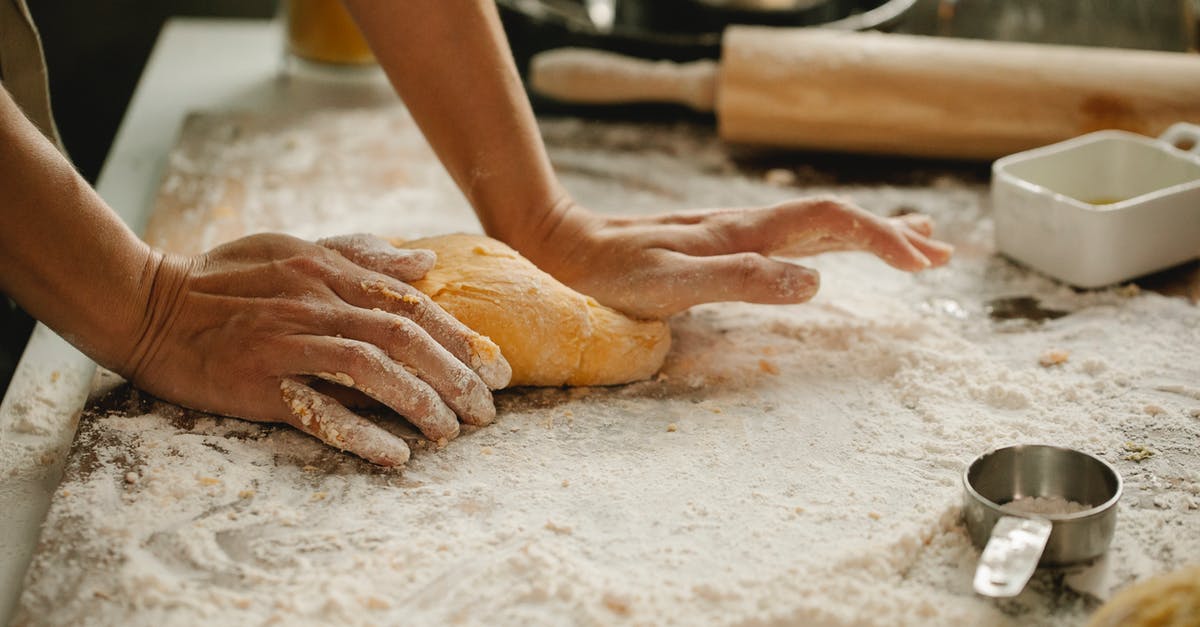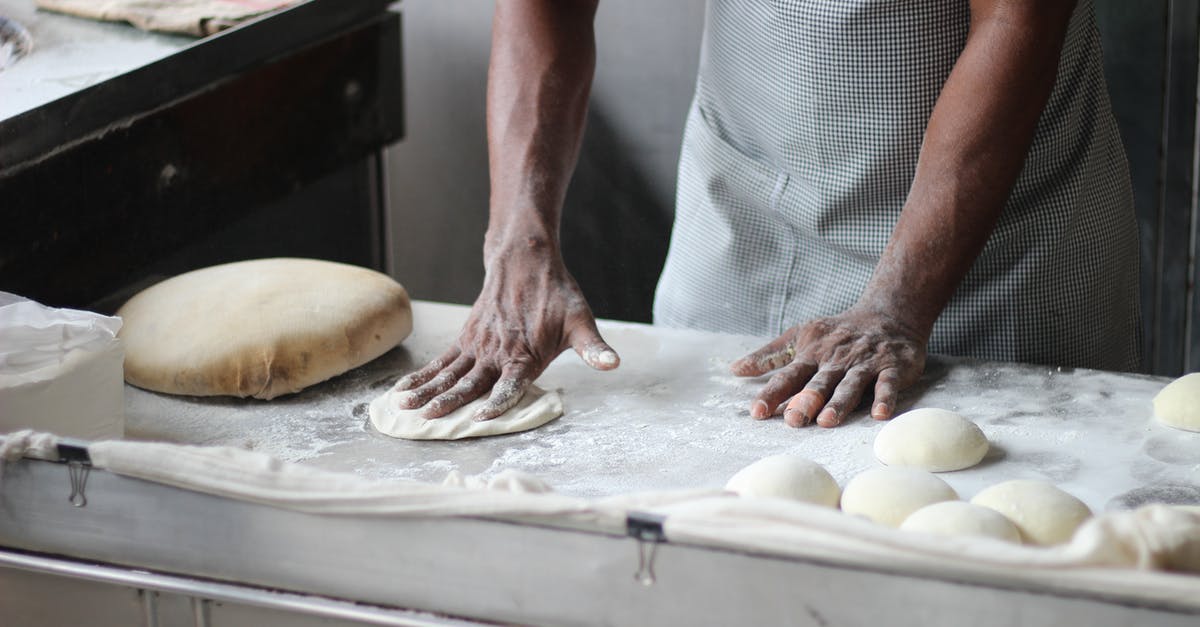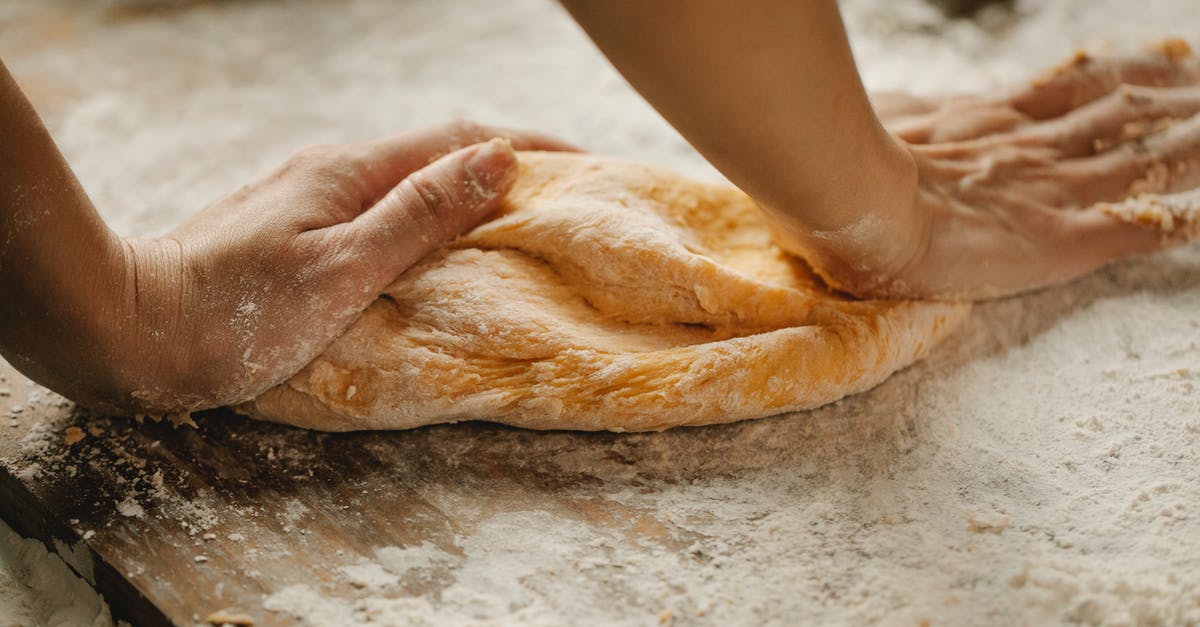Pastry flour for bread

I was looking through my Julia Child cookbook and noticed she said that the French use low protein flour for their plain French bread with a value of about eight percent. That is the value of protein in pastry flour but the only pastry I could find was Arrowhead Mills brand. On a whim, I thought I would whip up a loaf to see what would happen, though her recipe calls for all-purpose flour.
I found the dough to be very wet and a light brown color. I added some flour so it would be more manageable. There are three rising times including the final one. The first two bubbled up well, three times the initial size, but the last really didn't happen and I wound up with a flat loaf.
My question, then, is what happened? Does pastry flour require less water due to the lower protein? I used a quick rise yeast, too, but didn't decrease the amount. Did the yeast eat up all the protein and ran out by the final rise?
I also question whether I might have the wrong kind of pastry flour. The bag says "whole wheat pastry flour" but I read elsewhere that someone used "white pastry flour". I haven't found a difference yet.
My goal, as I said, was to make a loaf with eight percent protein flour.
EDIT: Looking around, I found what I suspected. Pastry flour absorbs less water, almost 50% less, than all-purpose. So reducing the amount of water might fix the problem. I intend to make another batch using all purpose and another with less water and pastry flour to see what happens.
Best Answer
As rumstcho said in comments, European flours operate on a completely different system than the American "protein = gluten = strength of flour" system. Not to go too far into this, but American flours vary a lot depending on type of wheat. "Harder" wheats produce higher gluten/protein flours. If you buy American "pastry/cake" vs. "all-purpose" vs. "bread flour" vs. "high-gluten", a lot of the difference will often be due to the precise type of wheat used. In some cases (especially all-purpose), the flour can actually be a blend of multiple wheat types.
But dough strength is not only impacted by total protein content or type of wheat. European flours often vary significantly in "extraction" rate, which is how much of the bran and germ are removed from the pure white starch. This also happens in American flours, particularly for cake and pastry flours where pure starch is more desirable. This also changes the "ash content" of the flour, which is basically correlated to extraction and more-or-less denotes the amount of stuff leftover after the pure starch is burned away (which consists of various minerals, etc.). Differences in milling procedure and size of milling particles can also significantly affect the way flour behaves by damaging the protein/gluten or by leaving larger particles of bran that can interfere with gluten networks (as in whole grain breads).
My point is that it's perfectly possible to have a "10% protein flour" that behaves close to a pastry flour or an all-purpose flour or even a bread flour in terms of various characteristics (gluten network formation and durability, elasticity, hydration tolerance, etc.). For some applications, some European bakers will still use relatively low-protein flour by American standards for various types of breads, but because of differences noted above, sufficient rise is still possible. But other characteristics may change (for example, a more tender crumb with different elasticity).
A final note is that stronger flours have become more common both in the U.S. and in Europe over the past century or two. If you go back to the 1700s or 1800s, historical evidence suggests bread was often baked with much "weaker" flours in terms of gluten content than today. Even a few decades ago in the U.S., "bread flour" was often a specialty item and "high-gluten" flour was unheard of for the average consumer. My grandmother and mother baked bread for many decades ONLY ever using what would today be considered a somewhat "soft" all-purpose flour. European standards have also changed significantly over the past century, so it's difficult to know exactly what Julia Child's flour was like beyond just the protein number.
And unless you have a close match to that original flour not only in protein content but the other characteristics I mentioned, you may have difficulty producing the original bread. If you want to see some other folks struggling to replicate Julia's bread using modern French flours (which are probably still not a match to Julia's original flour), I'd suggest a look at this thread.
Regardless, if you want to make bread recipes work with lower protein flours than they're expecting, do be prepared to decrease hydration significantly, and perhaps increase interventions during fermentation to maximize gluten strength (e.g., stretch-and-folds, using a pre-shaping and bench rest, good shaping technique in general). My guess is that may the reason behind the "three rises" in the recipe you mention; if you're seeing failures, I'd recommend decreasing total fermentation time before bake and instead increase frequency of interventions to strengthen gluten.
Pictures about "Pastry flour for bread"



Quick Answer about "Pastry flour for bread"
Pastry flour, typically a low 8% protein, is great for delicate pastries but is a tough sell for yeast bread. The lower a flour's protein, the less gluten it can form; and gluten is what allows bread to maintain its structure as it rises.Can pastry flour replace bread flour?
You can sub bread flour for most recipes, but don't over-mix, which will create more gluten. For cakes, cookies, or pie crusts, you can use pastry or cake flour, but don't try them with bread or pizza dough. The high protein content in bread flour gives elasticity, structure, and a strong rise to yeast doughs.Can I use pastry flour instead of all-purpose flour?
Pastry flour is a softer flour that substitutes well for all-purpose in any recipe where tenderness is the goal, like muffins, quick breads and cakes. If you can find it, whole-wheat pastry flour is an even better swap for all-purpose.What is the difference between pastry flour and bread flour?
If you want to grind flour for making bread, then look specifically for berries that say \u201chard\u201d wheat berries. On the other hand, pastry flour is made with from \u201csoft\u201d wheat berries. They have a lower protein (and gluten) content and lends itself to more tender quick breads, desserts, pancakes, and soda bread.How do you make bread flour out of pastry flour?
For every cup of cake flour called for in a recipe, measure one cup of all-purpose flour, remove 2 tablespoons of the flour and then add the flour to a mixing bowl. Add in 2 tablespoons of cornstarch and whisk well to combine. Voila!Flour Comparison: Bread, pastry, and cake flour
More answers regarding pastry flour for bread
Answer 2
If a recipe, especially an occidental one from the 20th century, just specifies flour, always assume white flour - wholegrain was probably considered hippie food back then, and would certainly have been explicitly mentioned.
White vs wholemeal types are not the same in aspects like hydration behaviour.
Sources: Stack Exchange - This article follows the attribution requirements of Stack Exchange and is licensed under CC BY-SA 3.0.
Images: Mariana Kurnyk, Klaus Nielsen, Vaibhav Jadhav, Klaus Nielsen
